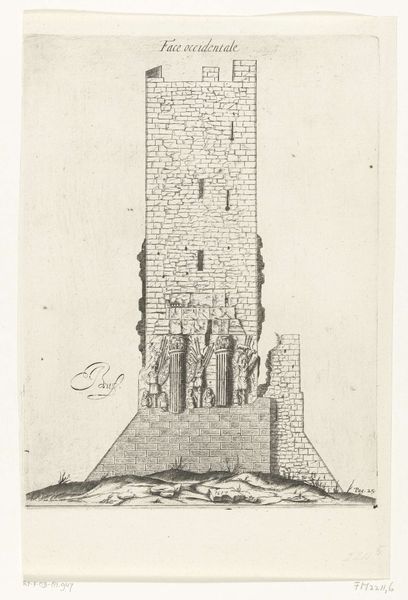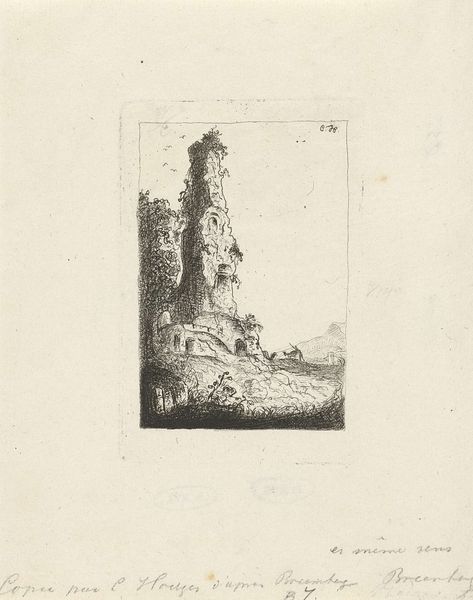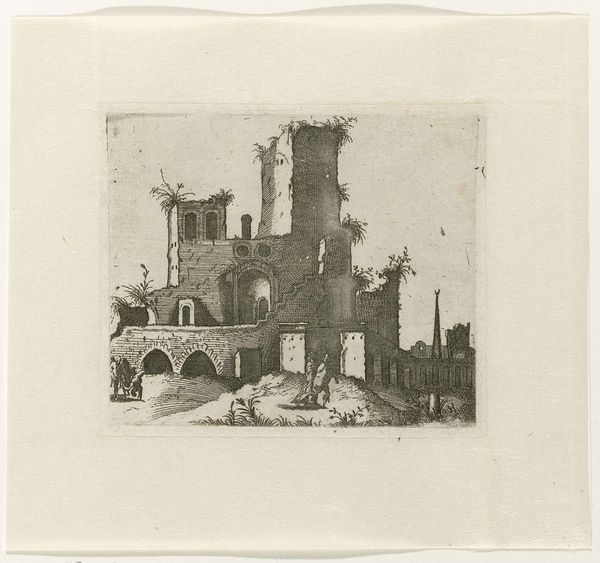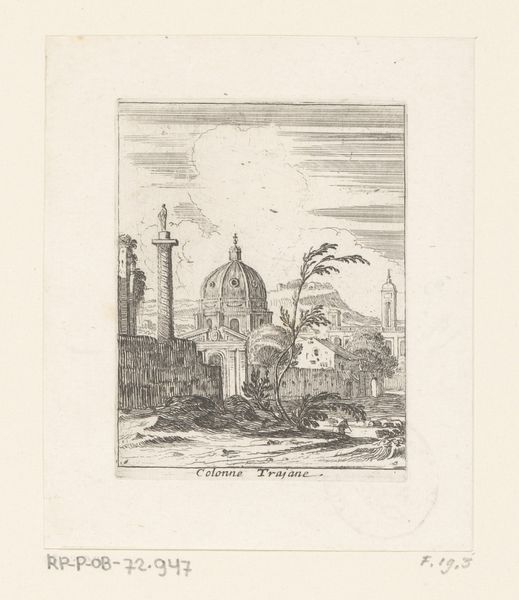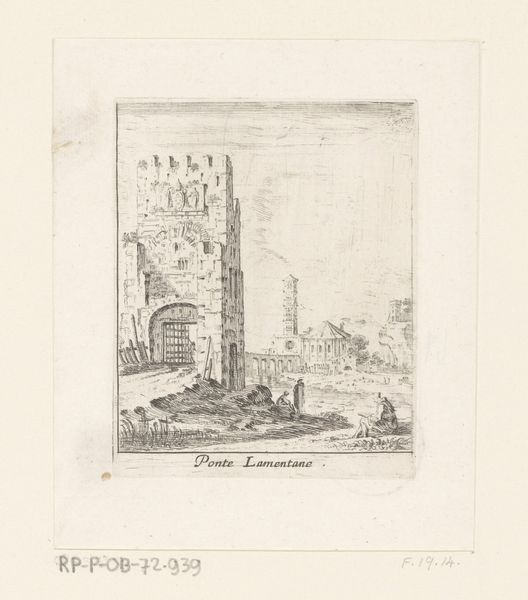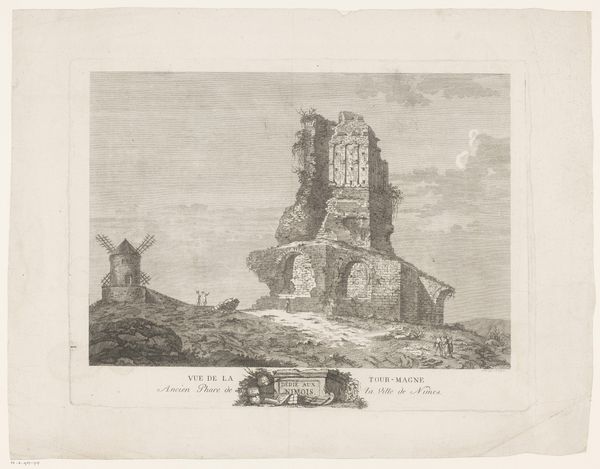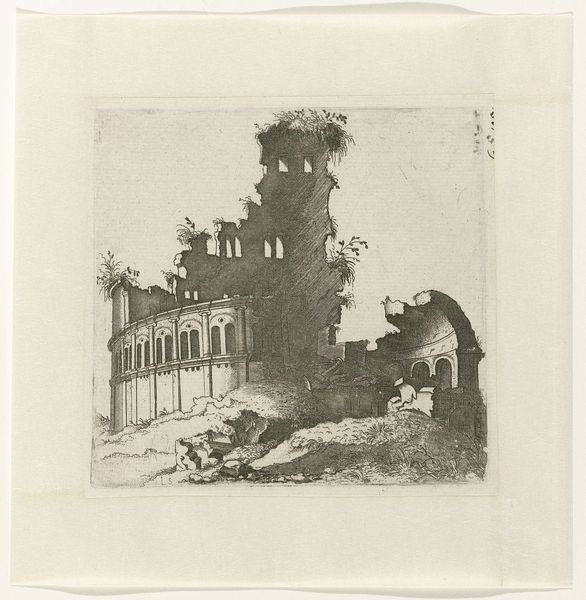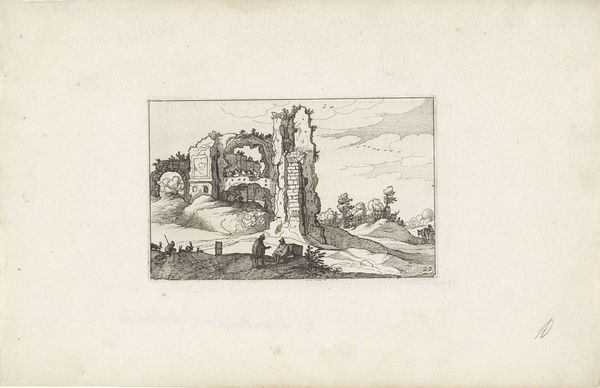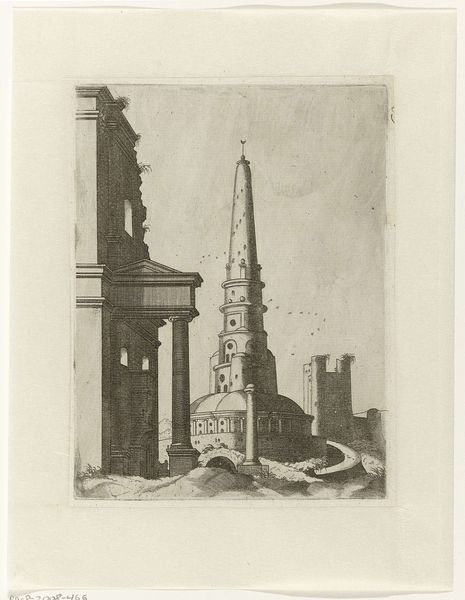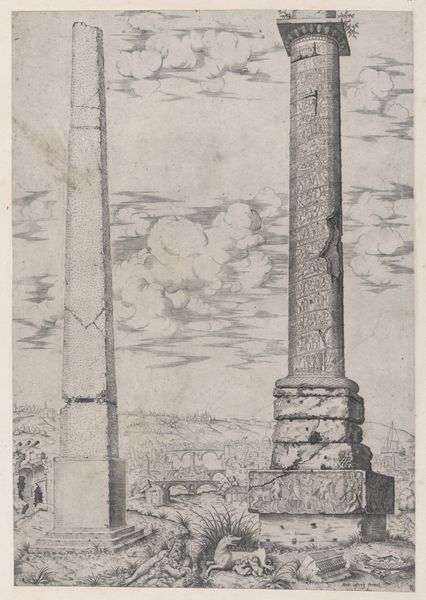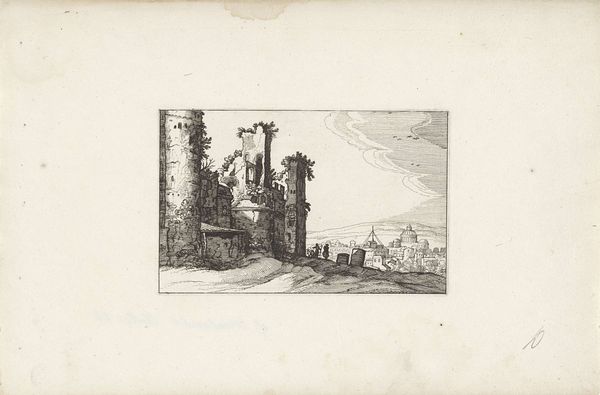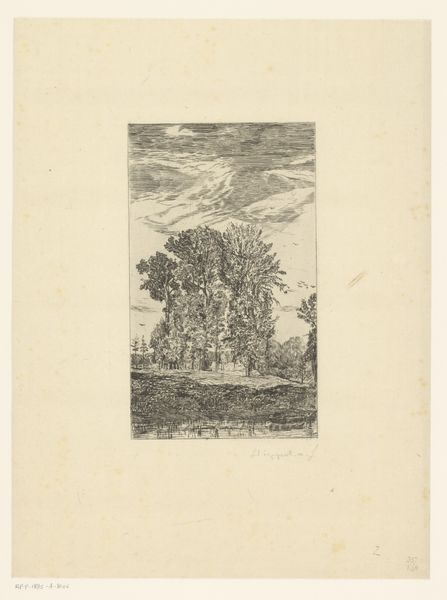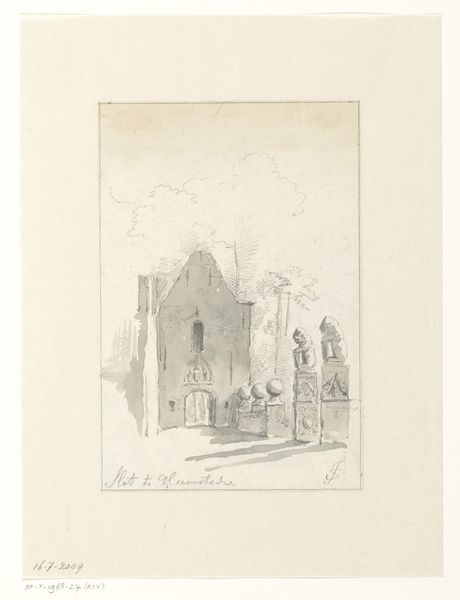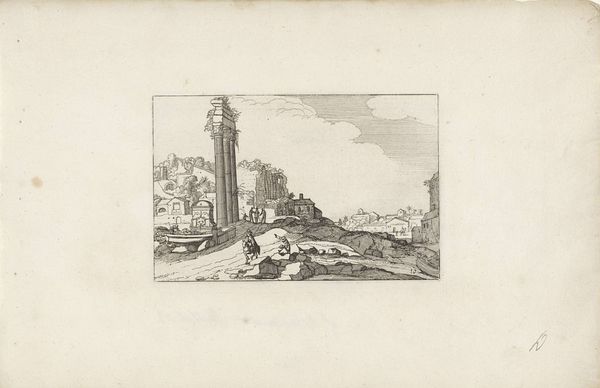
print, etching, paper, engraving
#
ink paper printed
# print
#
etching
#
old engraving style
#
landscape
#
mannerism
#
paper
#
engraving
Dimensions: height 138 mm, width 102 mm
Copyright: Rijks Museum: Open Domain
Editor: So, here we have "Landscape with a Ruin and a Tree to the Right," created around 1560 by Lambertus Suavius. It’s an etching, so ink on paper. The level of detail is striking for such a small-scale work, and the ruin feels really monumental, almost melancholic. What catches your eye? Curator: I'm immediately drawn to the etching process itself. Consider the labor involved in creating the matrix, the copper plate, meticulously incised with lines that hold the ink. The final image is then a product of that physical labor and chemical reaction. Do you think about how that repetitive, skilled work speaks to broader ideas of production at that time? Editor: That's interesting, I hadn’t really considered that. The artist, Suavius, repeating this act of inscription again and again. You're right, the process becomes central. How would that be different than painting? Curator: Think about it this way. Unlike a unique painting, the print exists in multiples, circulating ideas and images more widely. Who had access to these prints? What kind of economic networks supported their production and distribution? The materials, the labor, and the accessibility all intertwine to shape the meaning of the artwork. How do these networks influence what is depicted and how its produced? Editor: I guess I was focusing on the ruin itself as some romantic, crumbling ideal, and maybe missing that the medium itself shaped its creation, distribution and its eventual audience. Curator: Exactly. By shifting our focus to the material conditions of its creation, we start to unpack a richer understanding of this "Landscape," far beyond its aesthetic appeal. We examine how the image, and by extension, artistic ideas, were commodified and circulated in early modern Europe. Editor: That makes me see the artwork less as a simple landscape, and more as a product of complex social and economic forces. It changes everything. Thanks for pointing that out!
Comments
No comments
Be the first to comment and join the conversation on the ultimate creative platform.
